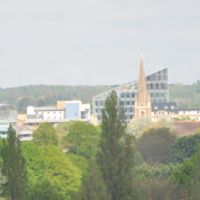The future of Green belt
 As we all know the Green Belt is a highly emotive issue. Its proponents and opponents hold deeply entrenched views as to its purpose and future.
As we all know the Green Belt is a highly emotive issue. Its proponents and opponents hold deeply entrenched views as to its purpose and future.
On the one side there are people whom see the Green Belt as protected areas, recreational spaces – the “green lungs” of the city – adding to the character and the quality of life of an area. They see the Green Belt as areas of significant landscape quality, protecting valuable agricultural land and wildlife habitats which enhance biodiversity.
On the other side Green Belt is seen as overly restrictive blunt planning designation, reducing land supply, driving up land values and in some cases stopping development in sustainable locations.
It is worth noting what the National Planning Policy Framework (NPPF) says about the Green Belt. Paragraph 79 states that, “the fundamental aim of Green Belt policy is to prevent urban sprawl by keeping land permanently open; the essential characteristics of Green Belts are their openness and their permanence”. Paragraph 80 sets out the following five purposes:
- to check the unrestricted sprawl of large built-up areas;
- to prevent neighbouring towns merging into one another;
- to assist in safeguarding the countryside from encroachment;
- to preserve the setting and special character of historic towns; and
- to assist in urban regeneration, by encouraging the recycling of derelict and other urban land.
The Government, publicly at least, are stating their commitment to protecting the country’s Green Belt. This commitment has been made despite the government’s election pledge to build 200,000 new homes per year and with the backdrop of a growing population, significant demand for new homes, increasing affordability issues and the fact that housing construction is at its lowest levels since the early 1940s.
The issue of Green Belt development is currently very topical and none more so than in and around London. A recent report ‘The Green Belt – A Place for Londoners?’ issued by London First, Quod and SERC concluded that whilst much of London’s Green Belt continues to play an important role it is not a “sacred cow”. It also proposed that when development is well designed it can be done in a way which is compatible with the NPPF purposes. In addition, the report proposed that all local authorities (LAs) should review the extent of its Green Belt and propose adjustments in their Local Plan reviews. This final point appears to be a fair conclusion and reasonable response to dealing with some of the country’s housing issues. There are signs that LAs are already doing this. There is no doubt LAs, particularly those which surround urban areas are struggling with these complex issues, given the political backlash from Councillors and local residents. However, it is my view that with LAs increasingly under pressure to increase housing targets, deliver on their five year land supply, provide appropriate social infrastructure and all in a sustainable way they will have to look to at the Green Belt to deliver on some of these objectives. Making these decision via the Local Plan process will enable LAs to undertake a planned approach to the management of their Green Belts, promoting suitable development and meeting housing provision.
This process therefore potentially opens up a window of opportunity which has been closed for nearly 50 years. Parties with land holdings in the Green Belt have the opportunity to promote their sites to the LA to release it for other uses such as housing.
In order to de-designate/re-allocate Green Belt a strong planning case needs to be made via the Plan making process. Again, it’s worth noting that the NPPF emphasises in paragraph 83 that LAs should establish Green Belt boundaries in their Local Plans. It goes on to state that, “once established, Green Belt boundaries should only be altered in exceptional circumstances, through the preparation or review of the Local Plan”.
The overriding need for housing, social infrastructure (such as schools/hospitals) or employment land are considered to be an ‘exceptional circumstance’. These, as well as arguments in relation to the sustainability and accessibility, could be used to make a case for review or release of Green Belt sites.
Green Belt reviews and allocations in emerging Local Plans offer opportunities to seek re-allocation of land. With LAs exploring development scenarios for their areas we can support clients in making the best case on their behalf to promote and nominate land for development. While this can be a long process, if successful it can significantly improve the likelihood of a successful planning application or wider masterplanning of an area.
However, it is also clear that much of the Green Belt does still meet the purposes of the NPPF and is fulfilling a key role. Such areas should be protected and where inappropriate development in the green belt is proposed we can also help clients to ensure that such locations continue to be protected and that proposed development is steered to other more sustainable locations.
Either way, with such significant housing pressures, the future of the Country’s Green Belt looks set to be debated for many years to come.





